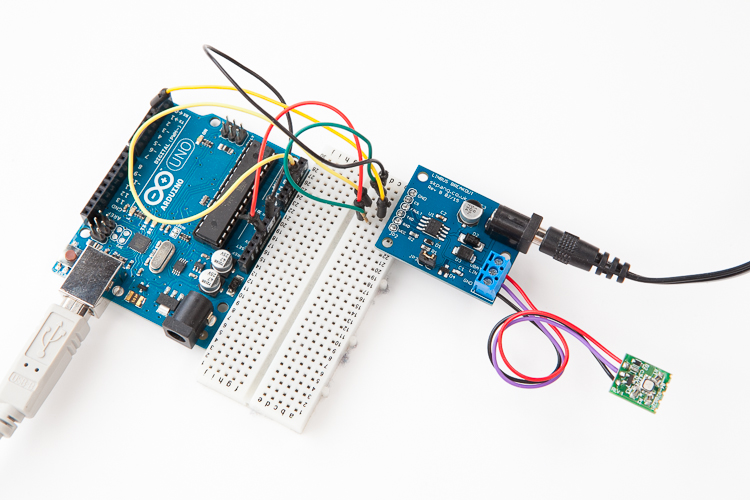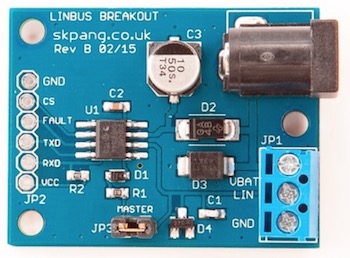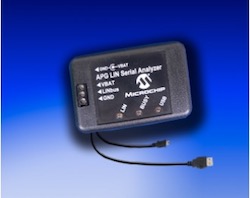Blog
Recent Posts
LIN Bus Configuration And Test Environment for Embedded Solutions Such As The Arduino Uno
Posted by on

LIN (Local Interconnect Network) is a serial network protocol used for communication between components in vehicles. The need for a cheap serial network arose as the technologies and the facilities implemented in the car grew, while the CAN bus was too expensive to implement for every component in the car. European car manufacturers started using different serial communication topologies, which led to compatibility problems.
In the late 1990s, the LIN Consortium was founded by five automakers (BMW, Volkswagen Group, Audi Group, Volvo Cars, Mercedes-Benz), with the technologies supplied (networking and hardware expertise) from Volcano Automotive Group and Motorola. The first fully implemented version of the new LIN specification (LIN version 1.3) was published in November 2002. In September 2003, version 2.0 was introduced to expand capabilities and make provisions for additional diagnostics features. LIN may be used also over the vehicle's battery power-line with a special DC-LIN transceiver.
The above shown LIN Bus breakout board connects to the embedded solution, in this case an Arduino Uno. The board comes with a Microchip MCP2004A transceiver, which is compliant with LIN Bus Specifications 1.3, 2.0, and 2.1 and is compliant to SAE J2602. It supports baud rates up to 20 Kbaud with a LIN-compatible output driver.
Features
- Compliant to SAE J2602
- Meets LIN-Bus specifications 1.3, 2.0 and 2.1
- 43 VDC Load dump protection
- 3.3 VDC or 5 VDC Logic
- Master or Slave configuration (Select master by closing JP3 )
- Vbatt input via 2.1mm jack socket or screw terminal
Resources
The above shown LIN Slave module used for this particular test configuration is a Microchip APGRD004. The APGRD004 is a automotive ambient interior lighting module reference design demonstrates microcontroller based control of RGB LED devices. This module can be controlled remotely by a master body controller via a LIN bus. These modules are offered in a very compact form factor board and comprise of a PIC12F615 MCU, an MCP2021 LIN transceiver/voltage regulator, and RGB LED. LIN commands are interpreted by the module to control color mixing (16,383 colors) and intensity (1023 levels). The kit ships with four modules to assign as lighting zones in a LIN or J2602 network. These modules can also be used in conjunction with the APGDT001 LIN Serial analyzer to quickly create a working LIN network straight out of the box.
The Microchip APGDT001 LIN Serial Analyzer development tool enables the user to monitor and communicate to a LIN (Local Interface Network) bus using a Personal Computer (PC).
This is a powerful tool which can be used to send messages, monitor the bus traffic, perform errors checks and filter messages amongst many other features, allowing the user to develop and debug the system implementation.
This comprehensive text/reference presents an in-depth review of the state of the art of automotive connectivity and cybersecurity with regard to trends, technologies, innovations, and applications. The text describes the challenges of the global automotive market, clearly showing where the multitude of innovative activities fit within the overall effort of cutting-edge automotive innovations, and provides an ideal framework for understanding the complexity of automotive connectivity and cybersecurity.
Topics and features: discusses the automotive market, automotive research and development, and automotive electrical/electronic and software technology; examines connected cars and autonomous vehicles, and methodological approaches to cybersecurity to avoid cyber-attacks against vehicles; provides an overview on the automotive industry that introduces the trends driving the automotive industry towards smart mobility and autonomous driving; reviews automotive research and development, offering background on the complexity involved in developing new vehicle models; describes the technologies essential for the evolution of connected cars, such as cyber-physical systems and the Internet of Things; presents case studies on Car2Go and car sharing, car hailing and ride-sharing, connected parking, and advanced driver assistance systems; includes review questions and exercises at the end of each chapter.
The insights offered by this practical guide will be of great value to graduate students, academic researchers and professionals in industry seeking to learn about the advanced methodologies in automotive connectivity and cybersecurity.
 Loading... Please wait...
Loading... Please wait...




